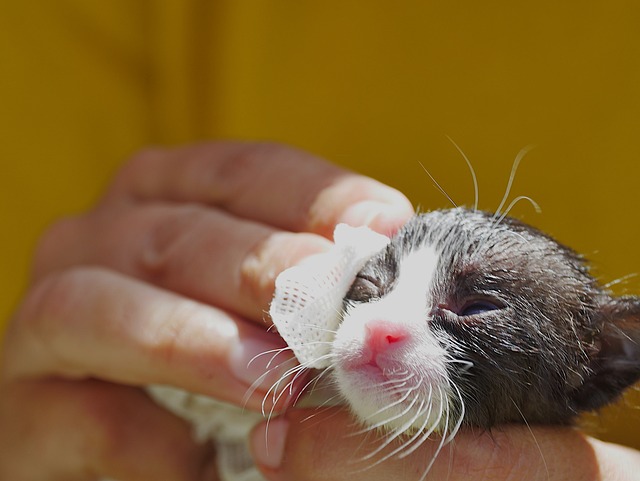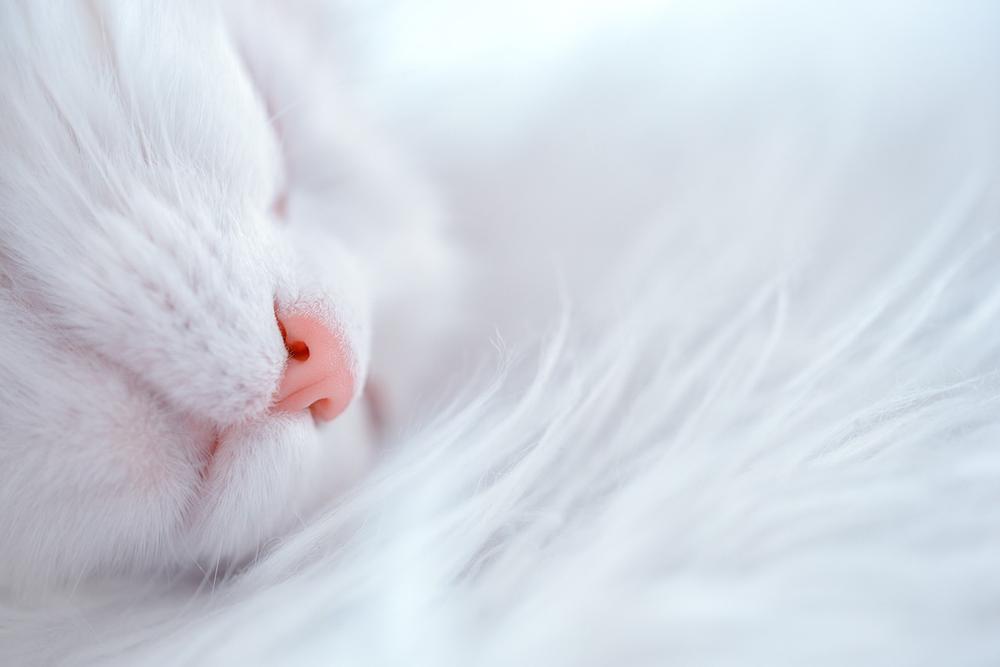How Long Does It Take for a Cat to Give Birth After Her Water Breaks

Feeling anxious about not knowing how long to wait after your cat's water breaks?
Worried you'll miss the big moment? 😮
Well, let me tell you, friend. you're not alone.
But don't fret, because today we're diving deep into the mysterious world of feline birthing.
Let's begin, shall we?
How Long Does It Take for a Cat to Give Birth After Her Water Breaks?
When a cat's water breaks, how long till she gives birth?

There's a few things that can influence the time it takes:
- How old and healthy the cat is: Older cats or those with health problems might take longer to give birth after their water breaks.
- Complications during labor: If something goes wrong like a kitten being in the wrong position or a difficult birth, it could take more time.
- The usual timeline: Typically, after a cat's water breaks, it takes between 12 and 24 hours for her to give birth.
- The first kitten: Normally, the first kitten arrives within an hour of the water breaking.
- Subsequent kittens: After the first one, each additional kitten tends to show up every half a day.
- Pregnancy duration: Cats are usually pregnant for 63 to 65 days, but this can vary.
- Three stages of labor: Labor happens in three stages. Stage one lasts 6-12 hours, stage two begins when kittens are born and can last up to 16 hours, and stage three involves the afterbirth coming out.
- Average length of labor: On average, a cat will give birth after about 64 hours of labor.
- Time between births: The gap between each birth can be as short as a few minutes or as long as over an hour.
These are just general rules, though, as every cat is different.
Keep a close eye on your cat and if you have any worries about her birthing process, talk to a vet.
Main points I'll expand upon further down this article:
- Signs of a cat's water breaking include agitation, diarrhea, and clear amniotic fluid discharge.
- Restlessness, howling, and a drop in body temperature are signs of imminent birth in a cat.
- Differentiating between amniotic fluid and urine can be challenging in cats.
- At-home abdominal examinations should be avoided to prevent miscarriage.
- Proper care for newborn kittens includes allowing the mother to nurse and clean them.
- Weaning can begin around 3-4 weeks of age for kittens.
- Cats go through stages of labor, including contractions and delivering the afterbirth.
- The number of kittens and their interval between births can impact timing.
- Prepare a nesting spot and provide a high-protein, calcium-rich diet for the mother cat before birth.
- Seek veterinary attention if the mother cat shows signs of distress or if she stops eating or becomes lethargic.
And now, let's delve into the signs and symptoms that can help you identify if your cat's water has broken and her delivery is imminent...
Signs of a Cat's Water Breaking
Distinguishing between amniotic fluid and urine is crucial for identifying when a cat's water breaks. Signs that a cat's water has broken include restlessness, agitation, diarrhea, and the discharge of clear, odorless, straw-colored amniotic fluid.
Furthermore, cats display other signs of impending labor such as pacing, howling, meowing, or chirping, a drop in body temperature, changes in abdomen and nipples, vaginal discharge, and abdominal straining.
However, differentiating between amniotic fluid, urine, and blood can be challenging. While cats may experience morning sickness during pregnancy and increased meowing, loss of appetite, and lowered body temperature during labor, mimicking human birthing, at-home abdominal examinations should not be performed unless the cat appears distressed to prevent miscarriage.
What Happens After a Cat's Water Breaks?
Once a cat's water breaks, here are 14 steps you need to follow to take care of the mother cat and her kittens:
- Make sure the cat has a cozy nesting box with warm and dry bedding.
- Allow the mother cat to do her thing - nursing and cleaning the kittens.
- Keep an eye out for any signs that she's having trouble nursing, which might mean you need to step in and bottle-feed.
- If necessary, prop up the back end of the mother cat while she nurses.
- At around 3-4 weeks old, start weaning the kittens.
- Pay attention to the momma cat's abdominal contractions and straining during labor.
- Take a deep breath and be patient because each kitten takes a few contractions to come out.
- Let the mother cat take care of removing the amniotic sac, cleaning their noses and mouths, eating the umbilical cord and placenta, and delivering the afterbirth between each kitten.
- Get everything ready for her before the delivery - prepare a nice spot for her to nest in.
- Feed the mother cat a diet that's high in protein and calcium to support her health.
- Double-check and make sure all the kittens are born and accounted for.
- After birth, give them clean bedding so they have a comfortable place to rest.
- Regularly check on the well-being of the mother cat to ensure she's doing okay.
- Don't let any smelly amniotic fluid hang around - clean it up right away.
That's how you handle a cat's water break! 😺
With these steps, you can make sure your furry friend has a safe and healthy birth.

Now, you might be wondering...
What are the specific scenarios where seeking veterinary assistance is necessary after a cat's water breaks?
Here's when you ought to seek professional help and what signs to look out for...
When to Seek Veterinary Assistance After a Cat's Water Breaks
Signs that show your cat needs a vet
When your cat's water breaks and she shows any of the following signs, it's time to call the vet right away.
No appetite or feeling tired
If your pregnant cat stops eating or seems tired for more than 24 hours after her water breaks, you should contact your veterinarian immediately.
It could mean something is wrong.
Problems during labor
If your cat is having trouble giving birth after her water breaks, and you see no kittens being delivered, don't wait.
Take her to the vet as soon as possible. Delaying can be dangerous for both the mother and her kittens.
Birthing takes too long or becomes difficult
Normally, a cat should give birth within an hour after her water breaks.
But if it's taking longer or she seems to be struggling without making progress, you need to get veterinary help right away.
Other situations where you should contact a vet
While not directly related to the water breaking, these signs also indicate that you should call your vet:
High body temperature or restlessness
If your cat's body temperature is higher than usual or she seems restless before or after her water breaks, ensure to schedule a check-up with the vet.
These signs could signal a problem.
Restless behavior like pacing or wailing
When your cat's water breaks and she starts acting restless by pacing or wailing, it's best to call your veterinarian for advice on what to do next.
Water breaks during birth
If your cat's water breaks while she is already giving birth, it may require professional help to safely deliver the kittens.
Contact your vet for immediate assistance.
It's always a good idea to talk to your veterinarian about emergency situations before your cat's due date.
This way, you'll know how to handle complications during birth.
And it gets worse...
There are several complications that can arise after a cat's water breaks, putting both the mother and her kittens at risk.
In the next section, we will explore these complications and discuss why veterinary attention is crucial in ensuring their health and safety.
Stay tuned to learn more about the potential risks and how to manage them effectively...
Potential Complications After a Cat's Water Breaks

When a cat's water breaks, there are some potential complications you should be aware of:
- Sometimes, the mother cat might not expel all of the afterbirth, which can cause infection. It's essential to have a veterinarian check it out.
- Infections can happen if the birth canal gets contaminated after the water breaks. Keep an eye out for signs like fever, foul-smelling discharge, and lethargy. You'll need to take your cat to the vet.
- Kittens can get stuck in the birth canal due to their size or positioning. If this happens, don't waste time—get immediate veterinary assistance for a safe delivery. 👨
- When a kitten comes out tail-first during birth, it increases the risk of complications. Call a veterinarian to intervene in such situations.
- Abnormal heavy bleeding after birth calls for close monitoring. If you notice unusually heavy bleeding, seek medical intervention.
- If the mother cat suddenly becomes lethargic after her water breaks, it could be a sign of a serious complication that needs immediate attention.
- If the mother keeps straining without making any progress in delivering a kitten, she might require veterinary assistance.
- Proper disposal of placentas is crucial to avoid infections during the birthing process.
Always consult with a veterinarian for proper care and guidance during this critical time.
And that wraps up today's article.
If you wish to read more of my useful articles, I recommend you check out some of these: How Long Can a Cat Survive Locked in a Shed, Cat Has Diarrhea After Giving Birth, Should I Stay With My Cat While She Gives Birth, Why Is My Pregnant Cat Losing Hair, and Should I Change the Bedding After Cat Gives Birth
Talk soon,
-Sarah Davis